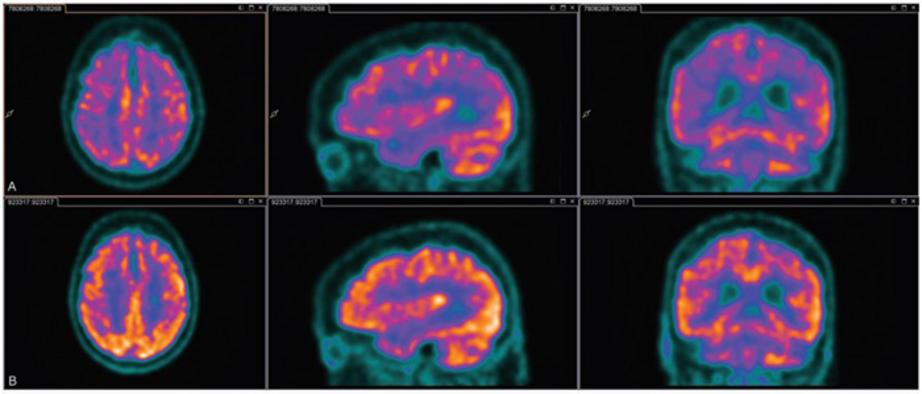Breakthrough in delirium research 'solves 2,500-year-old mystery'
Australian researchers say they have made a significant breakthrough in identifying the cause of delirium, a brain-related condition which affects up to 50 per cent of elderly hospital patients.
Associate Professor Gideon Caplan from the Prince of Wales Hospital in Randwick, NSW, said by using PET scans his team identified abnormal glucose metabolism in the brain as the leading cause of delirium.
"In 10 years of delirium research at Prince of Wales, we have found the answer to a 2,500-year-old mystery — what is happening in the brain during delirium," he said.
"This breakthrough now informs us as to where to aim our therapeutic interventions to treat, and hopefully to beat delirium."
 Infographic: The top row is the delirium PET scan, the bottom one is after the delirium. The darker colours show lower glucose metabolism in the brain. (Supplied: Journal of Cerebral Blood Flow & Metabolism)
Infographic: The top row is the delirium PET scan, the bottom one is after the delirium. The darker colours show lower glucose metabolism in the brain. (Supplied: Journal of Cerebral Blood Flow & Metabolism)
As many as one in 10 patients in hospital have delirium, a condition where patients become restless, suffer illusions and become incoherent.
One in four patients aged over 65 will be diagnosed with delirium, and often it is missed by hospital staff.
Using PET scans, researchers found changes in the part of the brain governing memory, and executive function.
Researchers found when the brain was unable to metabolise glucose efficiently, brain function deteriorated, causing delirium.
Associate Professor Caplan said the findings were extremely important.
"This condition is so common, and there is no treatment or way to prevent delirium," he said.

